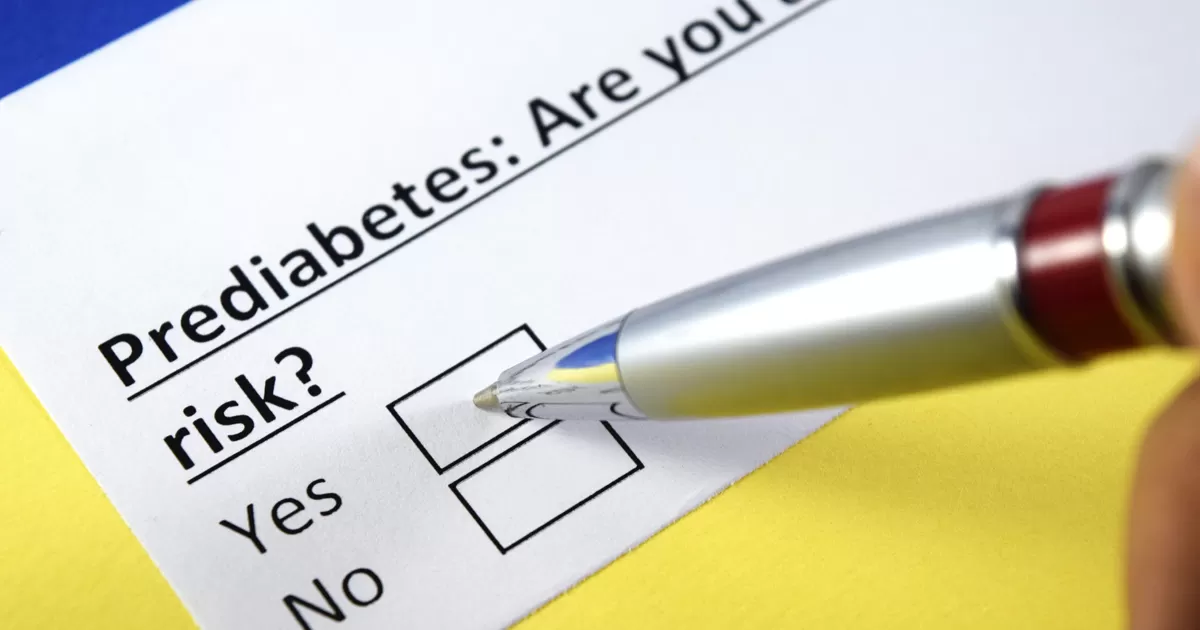Can You Have Prediabetes and Not Know It?

While you have probably heard of diabetes, you may not be as familiar with the medical condition known as prediabetes. A person is said to have prediabetes when their blood sugar levels are higher than normal, but not high enough to be diagnosed with type 2 diabetes. Even though it’s estimated that more than 1 out of every 3 adults (that’s 84 million people) in the US has prediabetes, 90% of them don’t know it.
Studies have shown that most people with prediabetes develop type 2 diabetes within 10 years unless they take steps toward a healthier lifestyle. And having type 2 diabetes can lead to a number of serious health problems, including kidney failure, blindness, and damage to nerves that can result in amputation of a toe, foot, or leg. Learn more about prediabetes, its risk factors, and the steps you can take to help prevent it.
What causes high blood sugar?
A hormone in the body, called insulin, plays a key role in how the body uses glucose (a form of sugar we get from digested food) for energy. Insulin is made in an organ called the pancreas and is released into the bloodstream after we eat. When certain cells in the body cannot absorb glucose as easily (called insulin resistance), there is a buildup of sugar in the blood. Over time, this causes the pancreas to make more and more insulin as it tries to get the cells to respond the way they should. Eventually the pancreas can’t keep up and blood sugar levels rise. This can lead to prediabetes and type 2 diabetes.
Researchers believe that being overweight and a lack of physical activity are among the leading causes of insulin resistance. Some other causes of insulin resistance may include taking certain medications, steroid use, hormones, issues with sleep (such as sleep apnea), smoking, and older age.
Are you at risk for prediabetes?
Because prediabetes often has no signs or symptoms, many people don’t know they have it. However, there are a number of risk factors that increase the chances for developing it.
To find out if you are at risk for prediabetes, take a look at the statements below. If you have one or more risk factors, talk with your healthcare provider about testing. He or she can order a simple blood test to confirm it.
- I am overweight.
- I am 45 years of age or older.
- I have a parent, brother, or sister who has type 2 diabetes.
- I am physically active fewer than 3 times a week.
- I have a history of cardiovascular disease, high blood pressure, high triglycerides, or low HDL.
- I have given birth to a baby that weighed more than 9 pounds or I have had diabetes during pregnancy (gestational diabetes).
- I have polycystic ovary syndrome (PCOS).
- I am African American, Hispanic/Latin American, American Indian, a Pacific Islander, or Asian American.
How do you diagnose prediabetes?
Since prediabetes generally has no signs or symptoms, diagnosis is generally based on the following blood tests:
- Hemoglobin A1C test: Shows the average glucose (sugar) levels in the blood over the last 3 months. The American Diabetes Association notes that prediabetes is diagnosed if the A1C level is 5.7% to 6.4%.
- Fasting Plasma Glucose (FPG) test: Measures blood glucose in a person who has fasted (nothing to eat or drink except water) for at least 8 hours before the test. Prediabetes is diagnosed when the fasting blood glucose level is 100 mg/dl to 125 mg/dl.
- Oral Glucose Tolerance Test (OGTT): Measures blood glucose in a person 2 hours after drinking a liquid containing glucose dissolved in water. Prediabetes is diagnosed when the blood glucose level is 140 mg/dl to 199 mg/dl 2 hours after drinking the liquid with glucose in it.

Download the Questions to Ask Your Healthcare Provider About Prediabetes here.
What you can do to prevent type 2 diabetes
If you have been diagnosed with prediabetes, it is important to work with your healthcare provider to improve your lifestyle habits. These lifestyle changes may help reduce your chances of developing type 2 diabetes. Key changes include:
- Losing weight, if you are overweight. For many people, losing 5% to 7% of their body weight can make a big difference. That’s 10 to 14 pounds for a 200-pound person.
- Making physical activity a regular part of your life. For example, try to walk at a brisk pace for at least 150 minutes every week. That’s 30 minutes a day, five days a week.
- Eating a healthy diet that consists of fruits, vegetables, whole grains, and meats. Try to avoid processed foods.
References
- 1. Centers for Disease Control and Prevention. Prediabetes. Accessed March 13, 2018.
- 2. National Institute of Diabetes and Digestive and Kidney Diseases. Prediabetes & Insulin Resistance. Accessed March 13, 2018.
- 3. Centers for Disease Control and Prevention. The Surprising Truth About Prediabetes. Accessed March 13, 2018.
- 4. Familydoctor.org. Prediabetes. Accessed March 14, 2018.
- 5. National Institute of Diabetes and Digestive and Kidney Diseases. Family Health History Quiz. Accessed May 24, 2018.
- 6. American Diabetes Association Standards of Medical Care in Diabetes—2018. Accessed July 10, 2018.
- 7. American Diabetes Association. Diagnosing Diabetes and Learning About Prediabetes. Accessed July 10, 2018.





